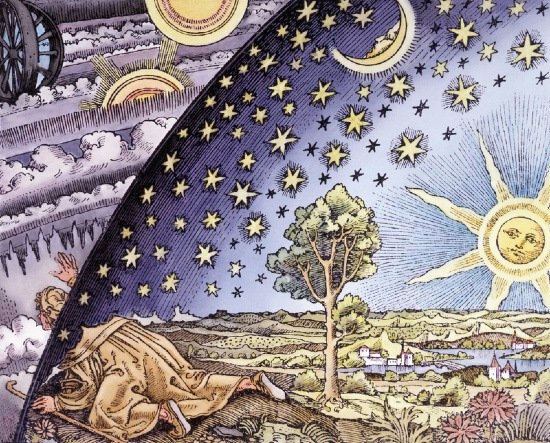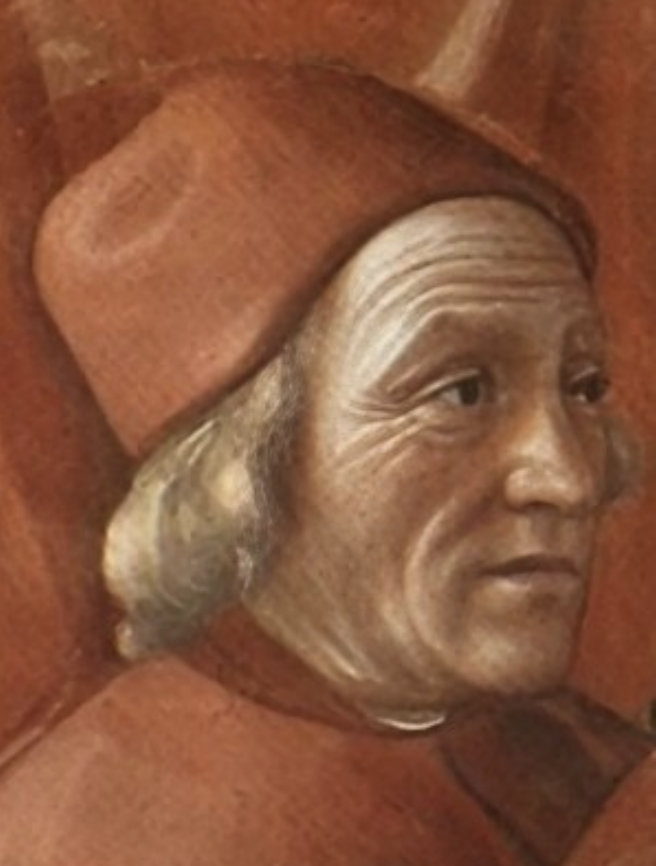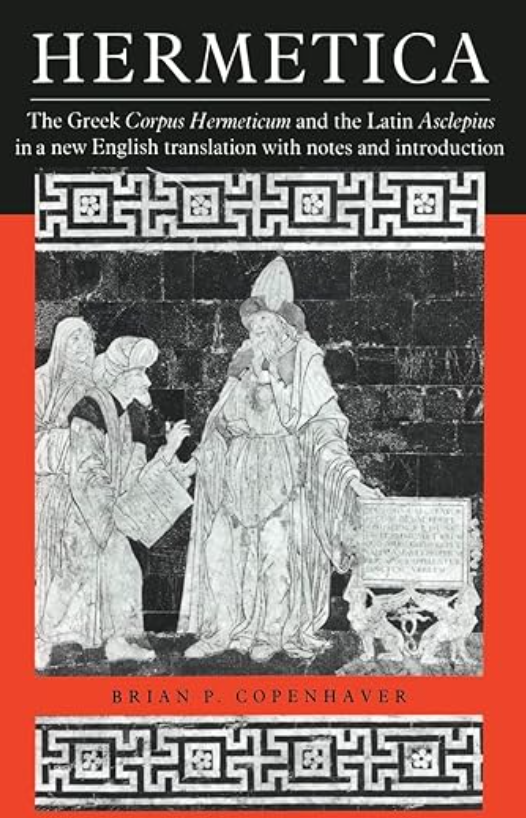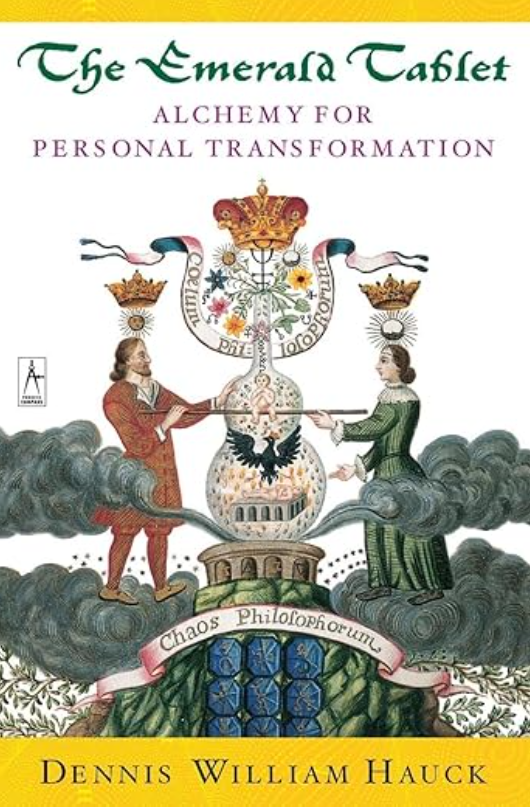
Hermeticism FAQs
Hermeticism & Catholicism
A Comparison Between Two Spiritual Traditions With Vast History
Though these two spiritual systems come from vastly different worlds, both ask life’s most profound questions: What is God? Why are we here? How do we return to the divine? Whether you're a seeker, a mystic, or someone raised Catholic now exploring esoteric traditions, this side-by-side look offers insight into the heart of two spiritual paths.
-
Rooted in ancient Egypt and Hellenistic Greece
Based on texts like the Corpus Hermeticum and the Kybalion
Teaches that all is mind, and humans are divine co-creators
-
Emerged from the teachings of Jesus Christ and early Christian communities
Guided by scripture, tradition, and the authority of the Catholic Church
Teaches that God is a personal, loving Creator who redeems humanity through grace and faith
Historical Context of Hermeticism and Catholicism
At first glance, Hermeticism and Catholicism seem worlds apart—one hidden, symbolic, and esoteric; the other institutional, theological, and sacramental. But both traditions arose in the same crucible of history: the Mediterranean basin of late antiquity, a place of collapsing empires, spiritual hunger, and visionary new syntheses of religious thought.
Their stories intertwine—not as allies or enemies, but as spiritual siblings separated by worldview. One moved underground; the other became the scaffolding of the Western world.
The Birthplace: Alexandria and the Crossroads of Empire
In the first few centuries CE, Alexandria, Egypt, was a global spiritual epicenter. Here, Greek philosophy, Egyptian religion, Jewish mysticism, Persian dualism, and early Christian teachings converged. It was in this atmosphere that the Corpus Hermeticum was written—dialogues between the mythical sage Hermes Trismegistus and his disciples, articulating a vision of a universe alive with mind, symbol, and divine intelligence.
Around the same time, Christianity was emerging as a mystical Jewish sect rooted in the teachings of Jesus of Nazareth. Its early adherents spoke in apocalyptic tones, practiced ecstatic rituals, and viewed Christ not only as savior, but as the Logos—the divine reason or order behind the universe. This is not unlike the Hermetic concept of the All, or the Logos as a divine intermediary between heaven and earth.
In this shared cultural soil, the two traditions grew side by side—sometimes in harmony, sometimes in tension.
From Mystery School to Church: The Rise of Catholicism
By the 4th century CE, Christianity was no longer a fringe movement. With the Edict of Milan in 313 and the subsequent Council of Nicaea in 325, it began its transformation into an imperial religion. What had been a mystical and diverse movement was standardized into doctrine. The Church grew increasingly wary of esoteric teachings, which it associated with heresy—particularly Gnosticism, Neoplatonism, and later, Hermeticism.
As the Church expanded, it absorbed many ancient symbols and rituals: the bishop’s mitre echoes Egyptian priestly headdresses; saints replaced household gods; sacraments became new rites of initiation. But access to the mysteries of union with God became codified, restricted to clergy, and defined through dogma.
Meanwhile, Hermeticism—with its insistence on personal gnosis and symbolic interpretation—was pushed into the margins, surviving through hidden schools and alchemical manuscripts, often preserved by mystics and philosophers working in secret.
A Shared Language of Mysticism and Ascent
Despite theological divergence, both traditions speak of the soul’s ascent to God. The Hermetic texts describe the soul rising through the planetary spheres, shedding illusions, and returning to unity with the All. Catholic mystics—like St. Teresa of Ávila, Meister Eckhart, and St. John of the Cross—describe a strikingly similar journey: a process of purification, illumination, and divine union.
Where Hermeticism offers symbolic correspondences and metaphysical maps, Catholicism offers contemplative prayer, sacraments, and spiritual disciplines aimed at theosis (divinization). Both uphold the possibility of direct encounter with the Divine, though one guards it through mystery, the other through orthodoxy.
The Renaissance and a Brief Reunion
In the 15th and 16th centuries, Hermeticism and Christianity met again—this time under the banner of the Renaissance. When Marsilio Ficino translated the Corpus Hermeticum in 1463 under the patronage of Cosimo de’ Medici, it was hailed as a revelation on par with the Bible.
The Christian Hermeticists of the Renaissance—Pico della Mirandola, Giordano Bruno, and John Dee, among others—believed that Hermetic teachings represented a prisca theologia (primordial theology), a spiritual truth revealed to humanity before any one religion claimed it.
These thinkers attempted to reconcile Hermeticism with Christianity, seeing no contradiction in using astrology, sacred geometry, and magic to deepen their Christian faith. But their views were dangerous in an increasingly rigid religious climate. Giordano Bruno was burned at the stake in 1600. Others were exiled, silenced, or erased.
A Postmodern Reawakening
Today, both traditions are undergoing a revival—though in very different ways. Catholic mysticism is being rediscovered by contemplatives, artists, and seekers disillusioned with secularism. At the same time, Hermeticism is flourishing in metaphysical circles, mystery schools, and esoteric communities that crave depth without dogma.
In the 21st century, we are no longer forced to choose one path over the other. Instead, we can study both as sacred expressions of the soul’s desire to know and be known by the Divine.
Hermeticism gives us the architecture of the cosmos. Catholicism gives us the sacred heart.
One whispers, “As above, so below.”
The other sings, “The kingdom of God is within you.”
Both, in their own language, remind us of who we are—and where we’re returning.
The Key Differences of Hermeticism vs. Gnosticism
God, the Cosmos, and the Nature of Reality
Catholicism teaches that God is a loving, personal being—Father, Son, and Holy Spirit—who created the world and desires a relationship with each person. Divine revelation is found through scripture, the sacraments, and the Church.
Hermeticism, by contrast, sees the divine as "The All"— an infinite mind or universal principle. Everything in existence is a manifestation of this One Mind, and the cosmos is a living symbol of divine intelligence.
“All is Mind. The Universe is Mental.”
— The Kybalion
“God is love.”
— 1 John 4:8
While Catholicism emphasizes a God who intervenes and loves personally, Hermeticism emphasizes a divine order that is both impersonal and ever-present—expressed through laws like polarity, rhythm, and correspondence.
Salvation or Self-Realization?
In Catholicism, the human soul is wounded by original sin and redeemed through Christ’s sacrifice. Salvation is received by grace through faith, good works, and participation in the Church’s sacramental life.
Hermeticism, on the other hand, sees the soul as divine but asleep. The path is one of awakening—through gnosis (direct knowing), inner transformation, and alignment with universal principles. There is no "salvation" in the Christian sense, only remembrance and realization of the soul's true nature.
This reflects a key distinction: Catholicism centers on divine intervention; Hermeticism centers on personal mastery.
Ritual and Mysticism
Both traditions hold deep reverence for ritual, but with different goals and cosmologies.
Catholic rituals—like the Mass, confession, and Eucharist—are sacramental acts through which God imparts grace. These are external signs of internal mysteries, made powerful by the Church's apostolic authority.
Hermetic rituals are symbolic and energetic, designed to align the practitioner with cosmic forces. These may involve sacred geometry, planetary correspondences, or elemental magic, used to invoke transformation and insight.
Interestingly, both traditions foster mysticism. Catholic mystics like St. Teresa of Ávila and Meister Eckhart spoke of direct union with God through contemplation—mirroring Hermetic ideals of union with the divine through inner knowing.
Shared Wisdom: Where Hermeticism and Catholicism Overlap
Despite their differences in doctrine, language, and structure, both Hermeticism and Catholicism spring from a deep yearning for union with the Divine. Here are a few key areas where these two traditions surprisingly align:
Union with the Divine
Both traditions ultimately point toward theosis—the union of the soul with God or the divine source.
Catholic mystics like St. Teresa of Ávila and Hermetic texts both describe this as a process of inner purification, surrender, and divine illumination.
Spiritual Discipline
Hermeticism teaches self-mastery through meditation, observation of natural law, and ritual.
Catholicism emphasizes spiritual discipline through prayer, contemplation, confession, and sacraments.
“Examine yourself whether you be in the faith.”
— 2 Corinthians 13:5
“If you do not make yourself equal to God, you cannot understand Him.”
— Corpus Hermeticum, Book XI
Sacred Ritual as Transformation
Both use ritual to access spiritual power—Catholics through the Mass and sacraments, Hermeticists through symbolic or magical rites.
In both systems, the physical is used to activate the spiritual.
Mystery and Revelation
Both traditions recognize the existence of divine mysteries that are not fully grasped by reason alone.
Each has its own form of initiation—through catechesis and baptism in Catholicism, or through study and esoteric training in Hermeticism.
Service and Purpose
Catholicism teaches a life of love, humility, and service to others.
Hermeticism, too, ultimately guides the practitioner toward harmony with universal law and compassionate stewardship of creation.
Famous Catholic Hermeticists of the Renaissance
-

Marsilio Ficino (1433–1499)
Catholic priest, philosopher, and translator of the Corpus Hermeticum into Latin.
Believed that Hermetic wisdom was compatible with Christian Neoplatonism.
His work helped spark the philosophical and artistic flourishing of the Italian Renaissance.
-

Pico della Mirandola (1463–1494)
Author of Oration on the Dignity of Man, often called the "Manifesto of the Renaissance."
Synthesized Christian theology, Kabbalah, Hermeticism, and Neoplatonism into a universal vision of human divinity.
Proposed that humanity has the free will to ascend or descend the "Great Chain of Being."
-

Giordano Bruno (1548–1600)
Dominican friar turned philosopher and mystic.
Embraced Hermetic cosmology, infinite worlds, and the immanence of God in all creation.
Burned at the stake for heresy in 1600, symbolizing the conflict between mystical vision and institutional control.
Why Study Both?
Studying Hermeticism and Catholicism side by side invites us to expand—not replace—our understanding of the Divine. Each tradition offers a unique lens: one symbolic and universal, the other sacramental and devotional. One emphasizes inner mastery through cosmic law, the other spiritual surrender through grace and relationship.
Together, they offer a deeper dialogue between sacred structure and sacred mystery.
Exploring both can:
Illuminate the spiritual roots of Western culture
Reveal how mysticism transcends doctrine
Support a more integrated relationship with both mind and heart, law and love
This is not about choosing one path over the other—it’s about gaining the wisdom to see that truth often wears many robes. Approaching both traditions with curiosity and reverence may not give easy answers, but it will expand your capacity to live in alignment with the Divine—both within and all around you.
If you're navigating a spiritual crossroads—or simply curious about the deeper currents within Western spirituality—this comparison invites reflection, not rejection.
🔍 Explore More Esoteric Comparisons
Curious how Hermetic thought compares to other spiritual traditions? Continue your journey of discovery:
What Is Hermeticism? (Beginner’s Guide) →
Hermeticism vs Christian Mysticism →
Hermeticism vs Law of Attraction →
Note: Spiritual exploration of various thought systems isn’t to decide which one is “better” or more correct—it’s to expand your lens. Each tradition offers a unique language for describing the journey of the soul, the structure of the universe, and the human potential for awakening.
In true Hermetic fashion, learning from multiple wisdom traditions is a path to greater discernment, wholeness, and integration. Let these teachings be mirrors, not rules—tools that help you clarify your own experience of the divine.
Recommended Texts for Students of Hermeticism
-

Corpus Hermeticum
A collection of dialogues between Hermes and his disciples, covering topics such as the nature of the divine, the creation of the universe, and the path to spiritual enlightenment. It explores the relationship between the divine mind and human consciousness, offering a path toward spiritual awakening.
-

Emerald Tablet
A cryptic and poetic text that contains some of the most famous Hermetic aphorisms, including "As above, so below." This phrase encapsulates the Hermetic belief in the interconnectedness of all things and the idea that the microcosm (human experience) reflects the macrocosm (the universe).
-

The Kybalion
This text presents the foundational teachings of Hermetic philosophy. It outlines the 7 universal principles that govern the nature of reality, providing insight into the workings of the universe with practical guidance for spiritual growth, self-mastery, and understanding the deeper truths of existence.
The Power of Lineage.
The tools, healings and secrets of the ancient mystery school traditions were once veiled, known only to the privileged elite—royalty, artists, scholars.
In these remarkable times, the doors are now open to the public, with wisdom unveiled for all who seek to take the journey on the path of self-mastery that has illuminated the minds of history's brightest souls…
Leonardo DiVinci, Nicola Tesla, David Bowie… These are just some of the remarkable people who studied in the mystery school tradition.
Are you ready?

